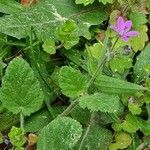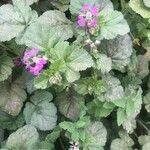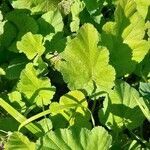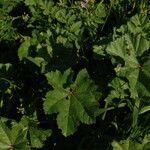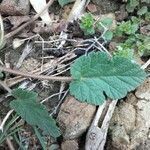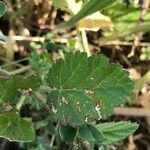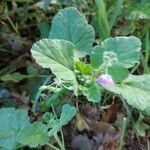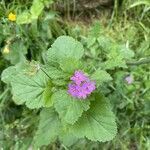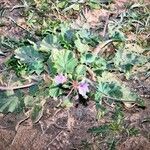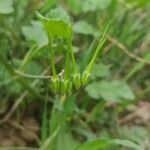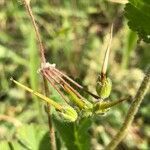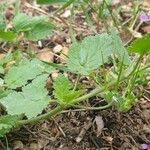Annual with procumbent or ascending hairy stems to c. 20 cm long. Rosette lvs with petioles to c. 8 cm long. Lamina to c. 4.5 × 2.5 cm, ± ovate-oblong, lobulate; lobes extending < 1/2 way to midrib, crenate, hairy and ± glandular beneath, particularly on the veins; base of lf cordate. Stipules broadly ovate, membranous, obtuse. Umbels few-flowered; peduncles and pedicels densely covered in glandular-hairs; bracts membranous, obtuse. Sepals 4-4.5 mm long, ovate-oblong, with dense short glandular and often stiff white hairs, mucronate. Petals pink or mauve-pink, c. 1.5× sepals; claw very short. Stamens c. 3 mm long, wider at base; anthers dark. Staminodes wider than stamens. Fr. beak 2-2.3 cm long, glabrous. Mericarps with appressed white hairs; apical pits glandular, with 1 prominent furrow beneath.
Annual, occasionally perennial herb, up to 0.5 m high/long. Stems erect or decumbent or procumbent. Leaves alternate or subopposite, long petiolate; lamina simple, ovate to deltate-ovate, base cordate to truncate. Inflorescence 3-7-flowered; peduncles 30-60 mm long; pedicels 10-16 mm long. Sepals 3 x 2 mm, with terete, apical mucro. Petals white or violet. Stamens free, fertile stamens violet, narrowly ovate becoming terete in upper half; staminodes narrowly ovate. Flowering time Aug.-Dec. Mericarps with head 3-5 mm long, apical pit glandular, tail 20-25 mm long. Seed 3 mm long.
An erect or sprawling herb. It has hairs. It can grow for one or two years. The leaves are oval or oblong. They are heart shaped at the base and have teeth. The leaves can have 3 lobes. The leaves are covered with small shiny glands. The flowers are purple or pink and 11-18 mm across. There are 3-7 flowers in a group. The fruit has a beak 18-35 mm long.
